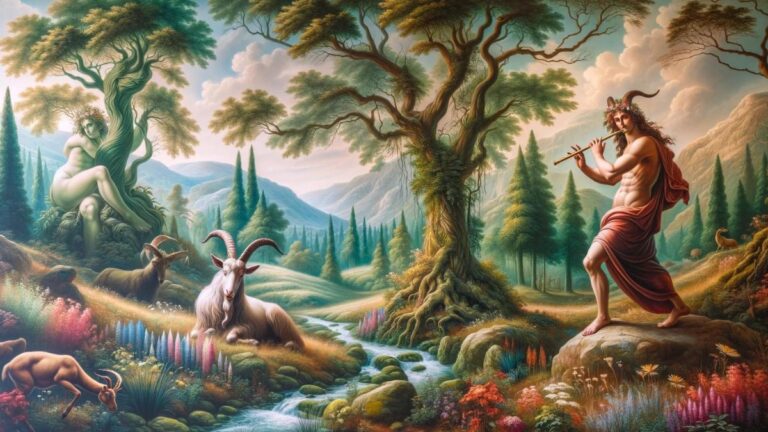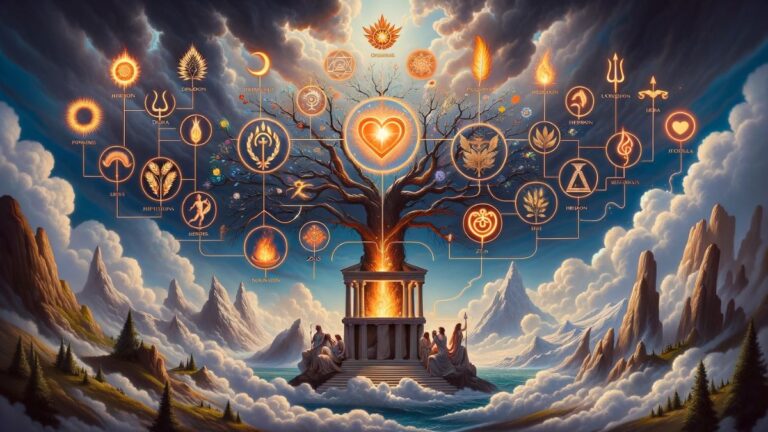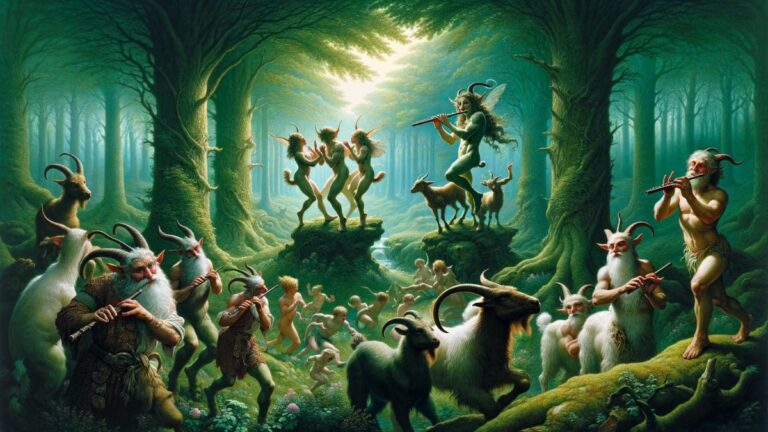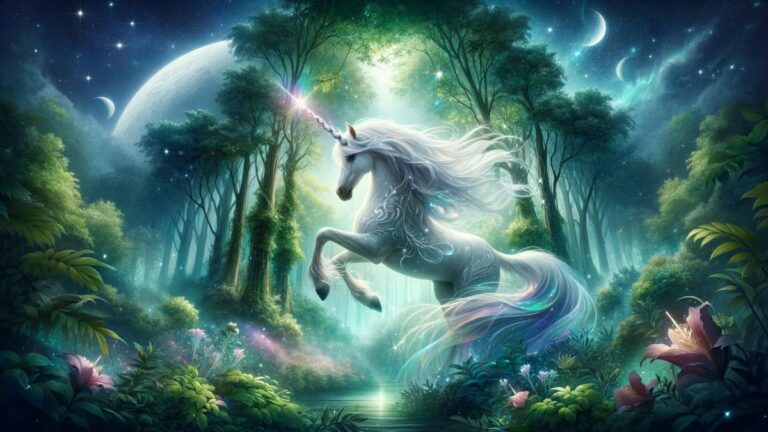10 Strongest Japanese Mythology Creatures
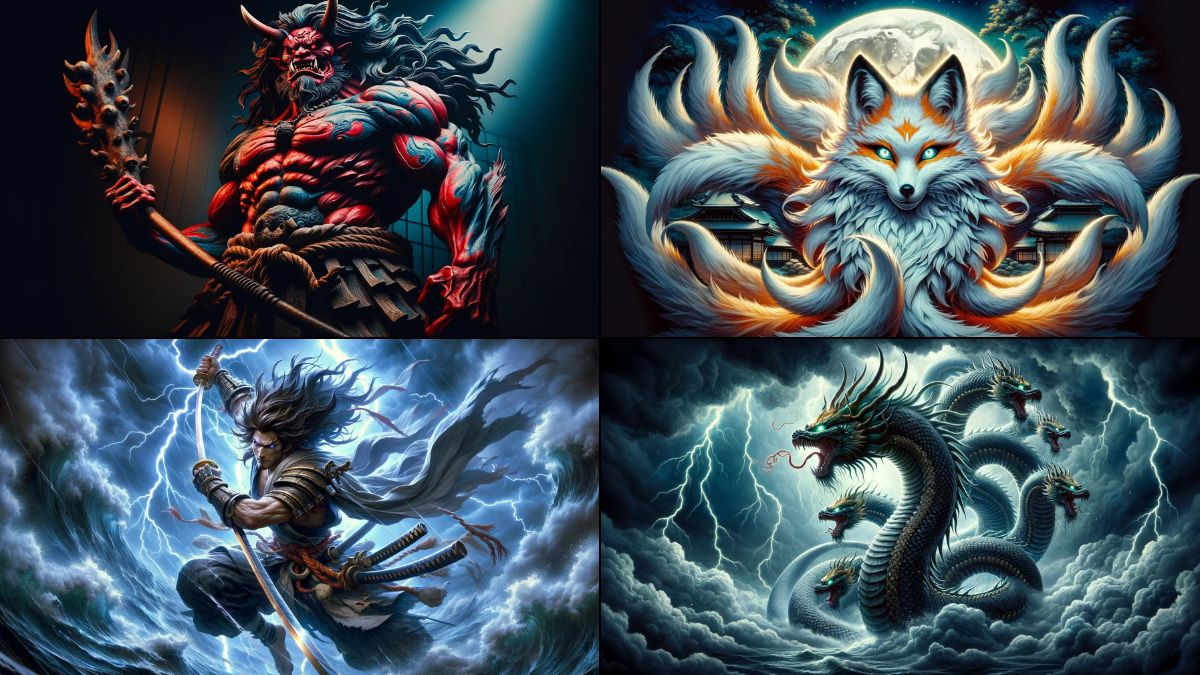
Japanese mythology is filled with fascinating and powerful creatures that capture the imagination. From dragons soaring in the skies to mischievous spirits lurking in the shadows, these beings have been part of folklore for centuries, inspiring awe and sometimes a bit of fear. Let’s dive into the world of these mythical beings and uncover the top ten strongest creatures that have stood the test of time in Japanese lore.
Yamata no Orochi

Yamata no Orochi is a legendary serpent from Japanese mythology, known for its eight heads and eight tails. This monstrous creature was said to have a body so large that it stretched across eight valleys and eight hills. Each head of Yamata no Orochi had its own mind, making it a formidable foe in ancient tales. It’s known for its fearsome appearance, with blood-red eyes and breath that could cause storms.
The story of Yamata no Orochi is closely tied to the Shinto god Susanoo, who defeated the beast to save Princess Kushinada. This tale symbolizes the triumph of bravery and heroism over overwhelming odds. Yamata no Orochi’s defeat led to the discovery of the sacred sword Kusanagi-no-Tsurugi, one of the three Imperial Regalia of Japan, highlighting the creature’s significance in Japanese folklore.
Amaterasu

Amaterasu, the Shinto goddess of the sun, holds a place of honor in Japanese mythology as one of the most important deities. She is celebrated for bringing light and warmth to the world, embodying the life-giving power of the sun. Her myths often highlight themes of peace, fertility, and renewal, reflecting her role as the protector of the land and its people.
Legend tells of Amaterasu retreating into a cave, plunging the world into darkness, until she was lured out by the joyous sounds of the other gods. This story symbolizes the cycle of night and day and the importance of light and happiness in overcoming despair. Amaterasu’s influence extends beyond the spiritual, as she is also considered an ancestral deity of the Japanese imperial family, linking her to the very identity of Japan itself.
Susanoo

Susanoo, the storm god of Shinto mythology, is known for his tempestuous nature and heroic deeds. As the brother of Amaterasu, the sun goddess, and Tsukuyomi, the moon god, Susanoo holds a significant place in the Japanese pantheon. His tales often involve tumultuous battles and confrontations, embodying the wild and unpredictable nature of storms.
One of Susanoo’s most famous myths involves his expulsion from the heavens and his subsequent encounter with the fearsome Yamata no Orochi. By using his cunning and strength, Susanoo defeated the monster, saving Princess Kushinada and proving his valor. This story highlights themes of protection, bravery, and redemption, showcasing Susanoo’s complex character as both a destroyer and a savior.
Tsukuyomi
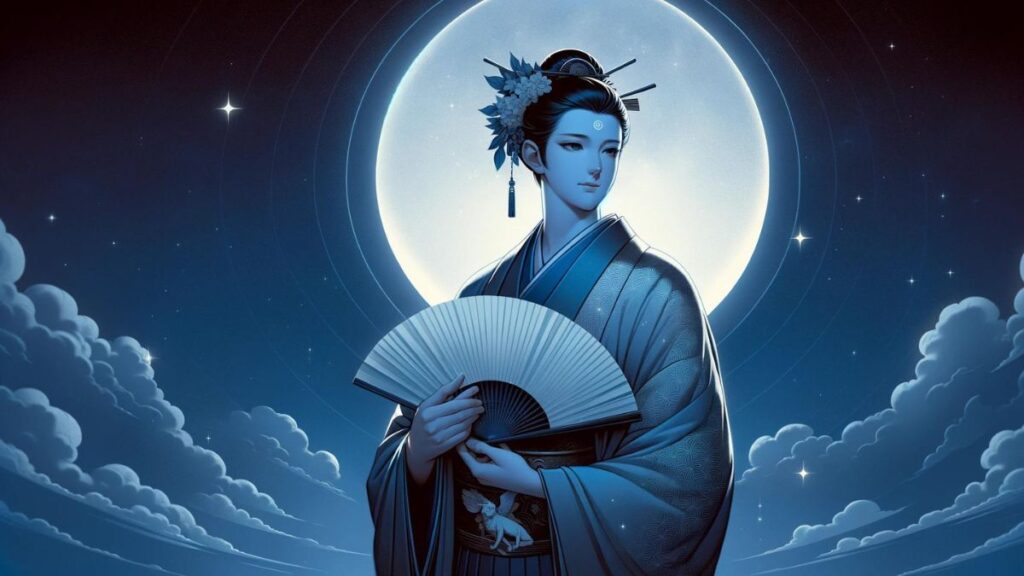
Tsukuyomi, the moon god in Shinto mythology, represents the beauty and mystery of the night. He is often depicted as a deity of calm and order, contrasting with the more tumultuous and emotional nature of his siblings, Amaterasu and Susanoo. Tsukuyomi’s realm is the serene and silent expanse of the night sky, where he governs over the tides and the passage of time.
One of the most notable stories about Tsukuyomi involves his falling out with Amaterasu, leading to the separation of night and day. This myth explains the cyclical nature of the sun and moon, embodying the balance and harmony that govern the natural world. Tsukuyomi’s cool and measured demeanor reflects the tranquil beauty of the moon, making him a symbol of reflection, renewal, and the subtle power of the night.
Raijin

Raijin is the thunder god in Japanese mythology, known for his power to create thunder and lightning. He is often depicted with drums that he beats to produce the sounds of a storm. Raijin’s image is that of a fierce warrior, embodying the unpredictable and sometimes terrifying aspects of nature. His presence in folklore serves as a reminder of the raw power and majesty of the natural world.
Stories about Raijin often include his interactions with other gods and humans, sometimes as a protector who wards off evil spirits, and other times as a playful deity causing mischief. He is a complex figure, capable of both benevolence and wrath, reflecting the dual nature of storms as both life-giving and destructive. Raijin’s role in Japanese culture is significant, as he is invoked in rituals and ceremonies to bring rain for crops and to protect against natural disasters.
Fujin
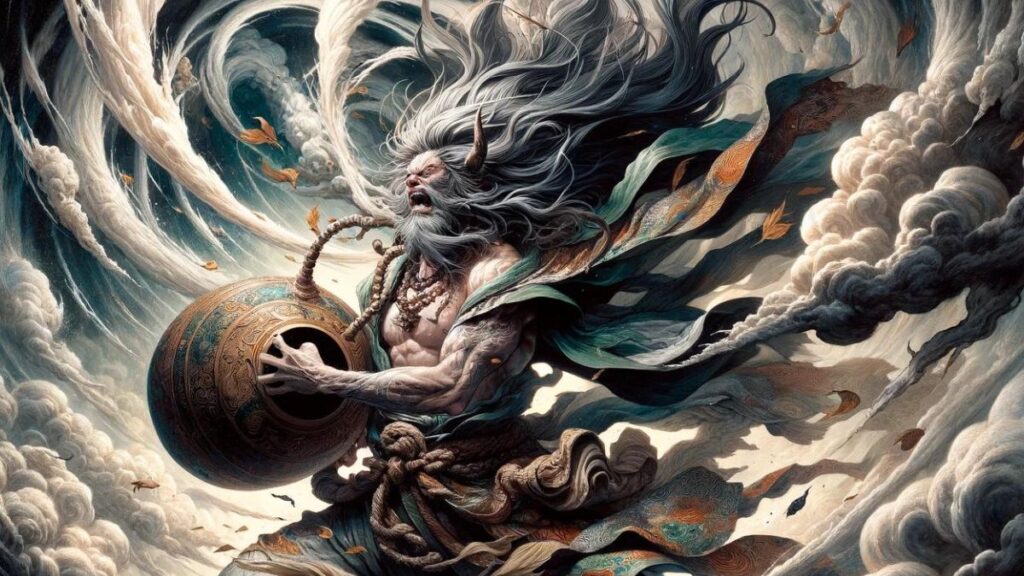
Fujin is the god of wind in Japanese mythology, often depicted carrying a bag of winds on his shoulders. His appearance is striking, with a wild and dynamic presence that perfectly captures the essence of the wind. Fujin plays a crucial role in the natural world, controlling the movement of the wind and influencing weather patterns across the land.
Fujin’s origins can be traced back to ancient myths where he and Raijin, the thunder god, are seen as companions or rivals, together representing the stormy elements of nature. His character is associated with change, movement, and unpredictability, much like the wind itself. Fujin’s impact on Japanese culture is significant, as he symbolizes the power of nature and the belief in the interconnectedness of the world’s elements.
Tengu
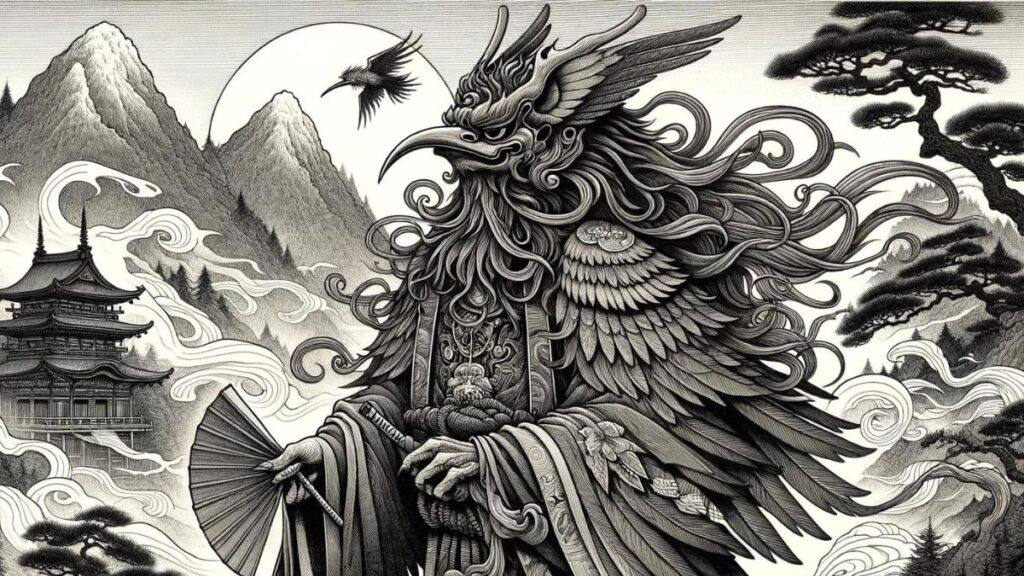
Tengu are mythical creatures from Japanese folklore, often depicted with bird-like features and human-like qualities. They are known to inhabit sacred forests and mountains, embodying the spirits of nature. Tengu are considered both protective deities and mischievous tricksters, reflecting their complex role in Japanese mythology.
These beings are often associated with martial arts and are said to have taught legendary warriors. Tengu are revered for their wisdom and strength, but they are also feared for their ability to lead people astray. The lore surrounding Tengu is rich with tales of their interactions with humans, offering moral lessons on pride, humility, and the importance of respecting the natural world.
Kappa

Kappa are intriguing creatures from Japanese folklore, known for their affinity with water. These beings are said to inhabit rivers and ponds, often described as having a humanoid form with green, scaly skin and a water-filled dish atop their heads. Kappa are known for their mischievous nature, sometimes interacting with humans in both helpful and harmful ways.
Despite their playful demeanor, Kappa are respected in folklore for their knowledge of medicine and their skill in wrestling. They are often appeased with offerings of cucumbers, their favorite food. Kappa tales serve as cautionary stories, teaching the importance of respecting the natural world and the dangers of underestimating those who might seem weak or small.
Oni

Oni are formidable demons or ogres in Japanese folklore, often depicted as causing mischief or bringing misfortune. They are known for their fearsome appearance, usually with red or blue skin, wild hair, and a pair of horns protruding from their heads. Oni wield immense strength and are often shown carrying a kanabo, a heavy iron club.
In many stories, Oni are portrayed as antagonists, challenging heroes and terrorizing villages. However, they also play protective roles, such as guarding gates or treasures. The tales of Oni serve as reminders of the challenges that life presents and the strength required to overcome them. They embody the darker aspects of the world, contrasting with the more benevolent spirits of Japanese mythology.
Kitsune

Kitsune, the fox spirits of Japanese folklore, are celebrated for their intelligence and magical abilities. These enigmatic beings are often depicted with multiple tails, a sign of their age, wisdom, and power. Kitsune are known to possess the ability to shape-shift, often taking human form to interact with the world.
The lore surrounding Kitsune is vast and varied, with stories ranging from mischievous tricksters to loyal guardians and friends. They are deeply intertwined with the Shinto religion, serving as messengers and servants of the gods. Kitsune tales often explore themes of loyalty, love, and the complexity of human and supernatural interactions, highlighting the multifaceted nature of these captivating creatures.


